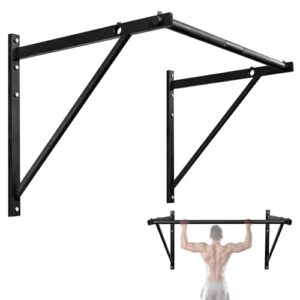Strength training encompasses a broader category of exercises aimed at increasing physical strength. Weight training, a subset of strength training, specifically involves lifting weights to build muscle.
Exploring the realms of fitness often leads to a comparison between strength training and weight training. While both methods are integral to improving fitness levels and building muscle, they cater to different goals and preferences. Fitness enthusiasts gravitate towards strength training for functional strength and enhanced muscle endurance, which can include bodyweight exercises and resistance bands.
In contrast, weight training zeroes in on muscle hypertrophy and power, utilizing free weights like dumbbells and barbells. This introduction serves as a guide for individuals aiming to differentiate their approach to muscle-building and strength-enhancing workouts, offering clarity on the distinct benefits and techniques inherent in strength versus weight training.

Credit: ironpinoy.com
The Great Fitness Debate: Strength Vs. Weight Training
Embark on a journey through one of the most talked-about topics in the fitness realm. The comparison between strength training and weight training has enthusiasts divided. Are they the same or drastically different? What should you focus on for your goals? This debate delves into the core of exercise philosophy and practical applications.
Pitting Muscle Against Iron
Strength training and weight training often cross paths, yet each has a unique goal. Strength training is about improving muscle function. Weight training refers to lifting weights to build muscle size and density. Think of strength as power and weight training as sculpting.
- Strength Training:
- Involves various methods
- Focus on increasing force generation
- Enhances overall muscle endurance
- Weight Training:
- Utilizes external weights
- Aims for muscle growth, known as hypertrophy
- Typically includes traditional gym equipment
Diving Into Fitness Philosophy
The essence of the strength vs. weight training debate stems from personal objectives. Are you aiming to become stronger or to achieve a more muscular physique? Your answer guides your fitness philosophy.
| Goal | Strength Training | Weight Training |
|---|---|---|
| Functionality | High | Moderate |
| Aesthetics | Moderate | High |
| Power | Primary focus | Secondary benefit |
| Size | Secondary benefit | Primary focus |
Understanding these differences helps tailor a plan that resonates with your vision. Fitness is not one-size-fits-all. Choose the path that aligns with your goals, be it strength, size, or a balance of both.
Breaking Down The Basics
When it comes to fitness, knowing the fundamentals is key. Strength training and weight training often sound similar, but they have different goals and techniques. Here, we’ll break down the basics, providing clarity on these two popular forms of exercise. By understanding their differences, you can better tailor your fitness routine to your personal goals. Let’s dive into what makes each training method unique.
Defining Strength Training
Strength training focuses on increasing your ability to exert force. It aims to improve muscle strength and endurance. This training can involve various equipment or even body weight exercises. Key points include:
- Better muscular endurance
- Enhanced muscle strength
- Use of varied equipment
Typical strength training exercises include squats, push-ups, and lunges. These activities work multiple muscle groups at once.
Understanding Weight Training
Weight training is a type of strength training that specifically uses weights for resistance. The main goal here is to increase muscle mass and size. Highlights of weight training include:
- Growth in muscle size
- Focus on lifting weights
- Progressive overload strategy
Weight training regimens may feature dumbbells, barbells, and machines. They target specific muscle groups with exercises like bicep curls and bench presses.
| Training Type | Primary Focus | Equipment Used | Example Exercises |
|---|---|---|---|
| Strength Training | Endurance and strength | Various, including body weight | Squats, push-ups |
| Weight Training | Muscle size and mass | Weights like dumbbells | Bicep curls, bench press |
Goals And Benefits Compared
Focusing on strength training or weight training depends on your fitness goals. Whether you’re aiming for more power or mass, understanding their benefits sharpens your workout focus. This section delves into how each training discipline can shape your body and improve overall health.
Aim For Power Or Mass?
Choosing between strength and weight training often hinges on what you want to achieve. Strength training targets increasing the force your muscles can produce. Weight training typically aims to build muscle size and body mass.
- Strength Training:
- Better joint function
- Enhanced muscle strength
- Improved balance and coordination
- Weight Training:
- Increased muscle mass
- Higher metabolic rate
- Improved aesthetic appeal
How Each Method Enhances Your Health
Both training methods contribute to a healthier body, but in different ways. They support strong bones, control weight, and boost stamina. Let’s break down their health perks:
| Strength Training | Weight Training | |
|---|---|---|
| Bone Density | Strengthens bones | Reduces bone decay |
| Heart Health | Lowers blood pressure | Increases good cholesterol |
| Metabolic Rate | Boosts metabolism | Burns calories efficiently |
While strength training reduces the likelihood of injury, weight training can sculpt your physique. Optimal health springs from a mix of both worlds. Deciding the right path anchors on personal goals and what your body needs.
Technique And Methodology
Understanding the techniques and methodologies behind strength and weight training is the key to maximizing workouts and preventing injury. While both aim for enhanced muscle power, their approaches differ greatly. Knowing the right form and method not only boosts performance but also ensures safety during exercises.
The Art Of Lifting
The Art of Lifting is not just about moving weights but doing it with proper technique. It involves learning the right posture, grip, and movement. For success in weight training, one must first master the basics:
- Start with posture: Align your body to handle weights safely.
- Progress gradually: Increase weights as you build strength.
- Mind the tempo: Control the lifting and lowering speeds.
- Rest accordingly: Give muscles time to recover.
Building Strength Without Weights
Strength training isn’t limited to weights. One can build significant strength using body-weight exercises and resistance bands. Suitable techniques are vital here to ensure effectiveness and avoid injuries:
- Engage core muscles for stability.
- Focus on controlled, slow movements.
- Create a routine combining various exercises.
- Consistency leads to strength over time.
Nutrition And Recovery
Strong muscles need more than just exercise. They need the right food and rest too. Imagine your body as a car. Food is your fuel. Rest is your repair time. To be your best, you need both. Let’s see how they work together when you train with weights or build strength.
Fueling For Growth And Recovery
After a workout, your muscles are like sponges. They want to soak up nutrients. Both strength training and weight training burn energy. This means your body needs good food to rebuild. Without the right food, muscles can’t grow properly.
- Proteins are the building blocks of muscles.
- Carbohydrates give you the energy to lift weights.
- Fats keep your joints moving smoothly.
Eating a mix of these nutrients is key. After a workout, aim for a meal with all three. A chicken breast, brown rice, and avocado could be a great choice.
| Protein | Carbohydrate | Fat |
|---|---|---|
| Chicken Breast | Quinoa | Nuts |
| Fish | Sweet Potato | Seeds |
| Eggs | Whole-grain Bread | Avocado |
The Role Of Diet In Performance
What you eat affects how much you can lift and how strong you can be. Your muscles need fuel to work hard. Without enough fuel, your workouts could feel harder. You might not see the gains you want.
A good diet does more than help you lift more weight. It helps your muscles repair. Eating right means less soreness. It means getting ready for your next workout faster.
Lifting weights or doing strength training taxes your body in different ways. It’s important to know what kind of workout you did. This helps you choose the best food for your recovery.
- For heavy lifting, you might need more protein.
- For endurance or circuit training, you might focus on carbohydrates.
- For overall health, don’t forget your fruits and veggies!
Eating a balanced diet is the key. This includes a variety of foods to get all the vitamins and minerals your body needs. Dairy, lean meats, nuts, fruits, and vegetables are all important. A colorful plate is a strong plate.

Credit: www.facebook.com
Finding Your Path In The Fitness Journey
Finding the right fitness path can be a dazzling endeavor. With so many methods to strengthen and build muscle, it’s crucial to discover what resonates with your goals and lifestyle. Two popular methodologies are strength training and weight training. While they may seem synonymous, subtle differences define them.
All fitness enthusiasts, beginners or seasoned gym-goers, eventually face the choice between these training styles. Your unique fitness journey paves the way to personalize your routine, potentially blending both techniques for optimal health benefits. Let’s explore how these methods differ and how you can tailor them to fit your fitness narrative.
Personalizing Your Routine
Your fitness routine should be as unique as you are. It’s not a one-size-fits-all scenario. Some individuals thrive on the power that comes with strength training. Others may find their stride in the repetition and endurance weight training provides. Here are key considerations to help personalize your regimen:
- Body Goals: Are you aiming for bulk, definition, or endurance?
- Current Fitness Level: Understand your starting point to build progressively.
- Lifestyle: Align your training with your daily routine for sustainability.
- Interests: Choose exercises that keep you engaged and excited.
Consulting with a fitness professional can also provide tailored advice to craft a routine that fosters progress and joy in your workout sessions.
Combining Strength And Weight Training For Optimal Results
Integrating strength and weight training can lead to comprehensive fitness gains. This hybrid approach enhances muscle growth, endurance, and metabolic health. Here’s a simple table that could help you visualize how to combine these workouts:
| Day of the Week | Strength Training Focus | Weight Training Focus |
|---|---|---|
| Monday | Upper Body | – |
| Wednesday | – | Circuit Sets |
| Friday | Lower Body | – |
| Sunday | – | High Repetition Sets |
Days in between can focus on active recovery or addressing specific muscle groups with tailored exercises. A diverse workout routine prevents fitness plateaus and keeps the body challenged.
Always remember, proper form, consistency, and a balanced diet are key to seeing results, regardless of the training approach. Embrace your fitness journey with intention, and watch your efforts manifest into a stronger, fitter you.

Credit: fitbeastclub.com
Frequently Asked Questions For Strength Training Vs Weight Training
Does Strength Training Mean Lifting Weights?
Strength training encompasses more than just lifting weights—it includes any exercise that builds muscle through resistance, such as bodyweight workouts or using resistance bands.
Will Strength Training Build Muscle?
Yes, strength training can build muscle by challenging your muscles to adapt and grow stronger through lifting weights or resistance exercises.
Is Body Weight Training Same As Strength Training?
Body weight training is a form of strength training that uses your own weight to provide resistance against gravity, focusing on increasing muscle strength and endurance.
Is It Better To Train For Muscle Or Strength?
Choosing to train for muscle or strength depends on your fitness goals. For a toned physique, focus on muscle training; for more power, prioritize strength exercises. Both approaches improve health but target different outcomes.
What Is Strength Training?
Strength training involves exercises that improve muscular strength and endurance, typically using resistance to contract muscles.
Does Weight Training Build Muscle?
Yes, weight training effectively builds muscle by challenging the body with weights, leading to hypertrophy.
Conclusion
Deciding between strength and weight training depends on your goals. While weight training hones in on muscle building, strength training enhances overall power. Remember, a balance of both may be key for optimal health. Consult a fitness professional to tailor the right regimen for you.
Choose wisely, train safely, and watch your fitness soar.
















